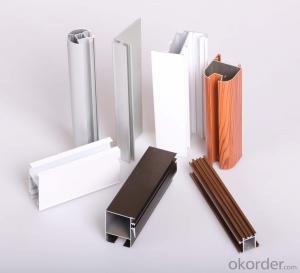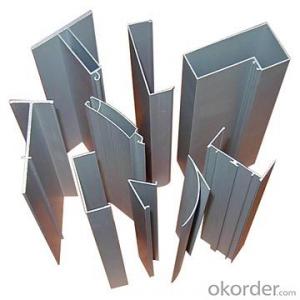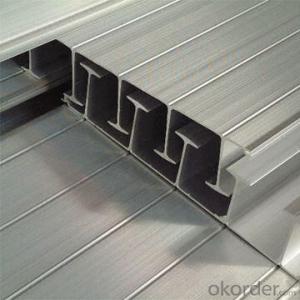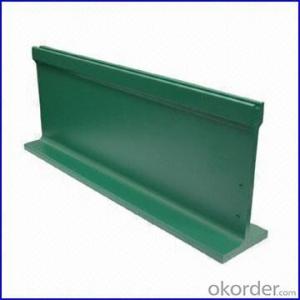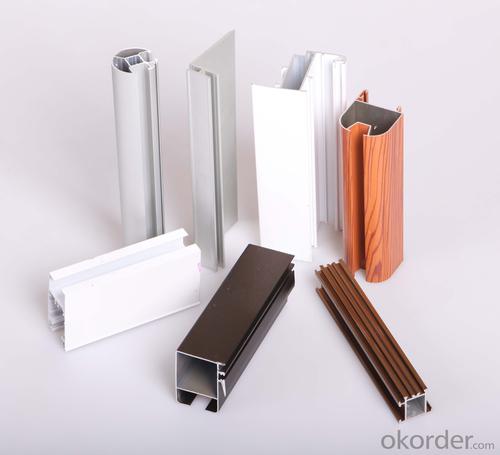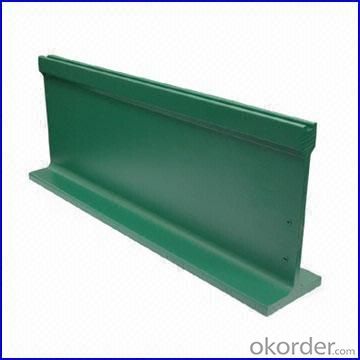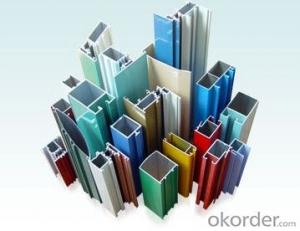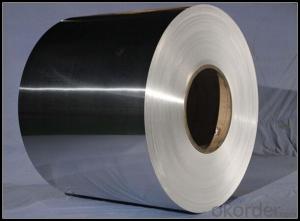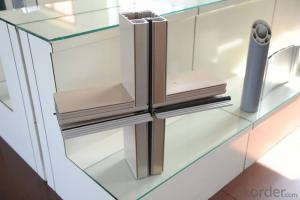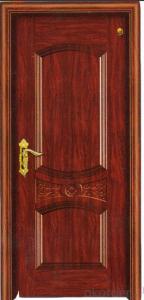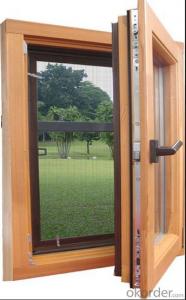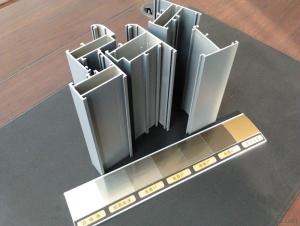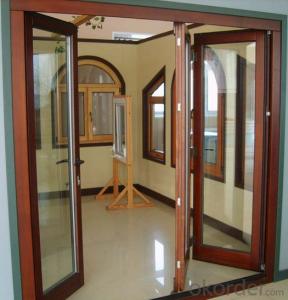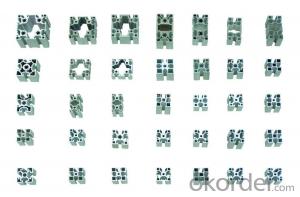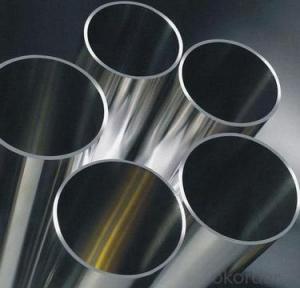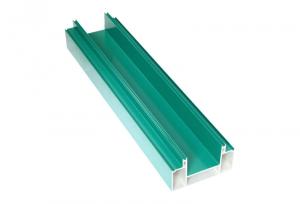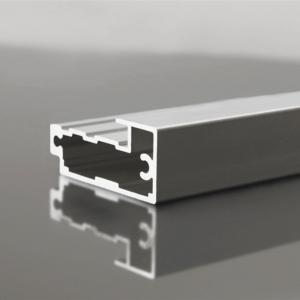alu perfiles for window and doors
- Loading Port:
- China Main Port
- Payment Terms:
- TT OR LC
- Min Order Qty:
- -
- Supply Capability:
- -
OKorder Service Pledge
OKorder Financial Service
You Might Also Like
Aluminium is a relatively soft, durable, lightweight, ductileand malleablemetalwith appearance ranging from silvery to dull gray, depending on the surfaceroughness. It is nonmagnetic and does not easily ignite. A fresh film ofaluminium serves as a good reflector (approximately 92%) of visible lightand an excellent reflector (as much as 98%) of medium and far infraredradiation. The yield strength of pure aluminium is 7–11 MPa,while aluminium alloys have yield strengths ranging from200 MPa to 600 MPa. Aluminium has about one-third the densityand stiffness of steel. It is easily machined,cast, drawn and extruded.
Features:
Material | Alloy 6063,6061,6005or according to customer’s choice |
Temper | T3, T4, T5, T6 |
Surface | Anodize, electrophoresis, powder coating, PVDF coating, wood grain painting, matted, etc. |
Length | Coating 6.5 meters, Anodizing 6.5 meters, Mill finish 5 meters |
Application | Industrial, electrical equipment(TV set, air conditioner, refrigerator, computer), decoration,construction, transportation |
Custom Made | We can package following with customer's request. |
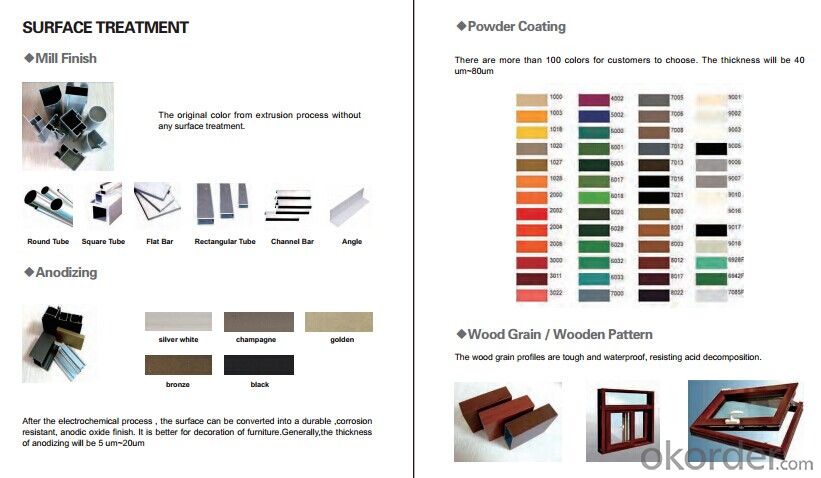
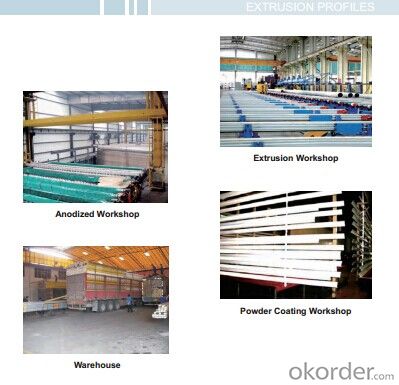

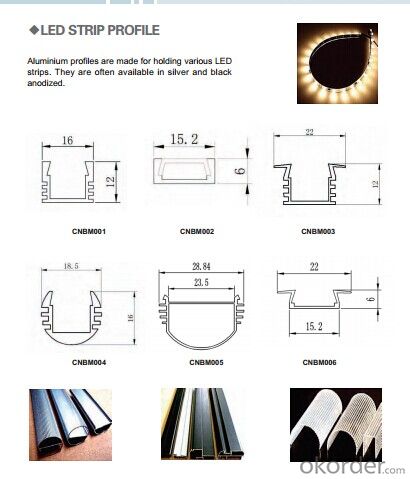
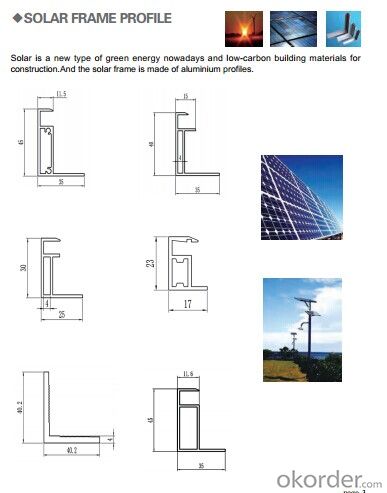

- Q: Can aluminum profiles be used in lightweight construction applications?
- Yes, aluminum profiles can be used in lightweight construction applications. Aluminum is a lightweight and durable material that offers excellent strength-to-weight ratio, making it ideal for various construction purposes. It is commonly used in applications such as framing, support structures, and building facades, where weight reduction is crucial. Additionally, aluminum profiles can be easily customized and assembled, offering versatility and flexibility in design.
- Q: Xi'an XAC aluminum sales site.
- How to choose the industrial aluminum profiles, this problem for the just contact with industrial aluminum profile friends, is really a serious problem to consider.That selection of industrial aluminum manufacturers is not good, money, goods is not good, he can give you redo is OK, but also take time; meet industrial aluminum manufacturers some black, and you may be wrangling, that egg pain.
- Q: What are the possible alternatives to aluminum extrusions in the construction industry?
- <p>Yes, there are several alternative materials that can replace aluminum extrusions in construction projects. These include steel, which is strong and durable but heavier; fiberglass, known for its lightweight and corrosion resistance; and thermoplastics like PVC, which are cost-effective and easy to work with. Each material has its own advantages and limitations, and the choice depends on the specific requirements of the project, such as strength, weight, cost, and environmental factors.</p>
- Q: This question asks for a list of various aluminum profiles that are utilized in the construction of building facades and cladding systems.
- <p>Aluminum profiles for facades and cladding systems come in various types, each serving specific purposes in construction. Common types include: 1. <strong>Aluminum Extrusions</strong>: Used for structural support and can be customized for specific design requirements. 2. <strong>Aluminum Channels</strong>: Often used for attaching panels or as a part of the support structure. 3. <strong>Aluminum Angles</strong>: Provide corner support and reinforcement. 4. <strong>Aluminum Flat Bars</strong>: Used for horizontal or vertical support in facade systems. 5. <strong>Aluminum Tubes</strong>: Can be used as a decorative element or for structural reinforcement. 6. <strong>Aluminum Louvers</strong>: Designed for sun shading and ventilation. 7. <strong>Aluminum Panels</strong>: Can be flat or profiled, used for the outer layer of the facade. 8. <strong>Aluminum Trims and Mouldings</strong>: Used for finishing and detailing around windows, doors, and edges. Each type is chosen based on the architectural design, structural requirements, and aesthetic preferences.</p>
- Q: How do aluminum profiles contribute to daylighting strategies?
- Aluminum profiles play a significant role in daylighting strategies by facilitating the efficient use of natural light in buildings. These profiles are used to create windows, skylights, and curtain wall systems, which allow for the maximum entry of sunlight into the interior spaces. One of the primary advantages of using aluminum profiles in daylighting strategies is their ability to support large glass panes. Aluminum is lightweight and structurally strong, enabling the creation of expansive glazing systems that maximize the transmission of natural light. These profiles can be designed to have slim sightlines, providing unobstructed views and allowing more sunlight to enter the building. Moreover, aluminum profiles can be thermally broken, meaning they have a layer of insulation between the interior and exterior aluminum sections. This thermal break prevents the transfer of heat and cold, improving the energy efficiency of the building. By minimizing thermal bridging, aluminum profiles contribute to reducing the loss of heat or cool air, resulting in lower energy consumption for heating and cooling systems. Additionally, aluminum profiles can be finished with various coatings that enhance their daylighting performance. For instance, reflective coatings can be applied to the profiles to redirect sunlight deeper into the interior, increasing the overall brightness of the space. Such coatings can also help reduce glare and control the intensity of sunlight, creating a more comfortable and visually pleasing environment. Furthermore, aluminum profiles offer flexibility in terms of design and customization. They can be shaped into different geometries and sizes, enabling architects to create innovative and unique daylighting solutions. For example, the profiles can be curved, angled, or combined with other materials to achieve specific aesthetic and functional requirements. In summary, aluminum profiles contribute to daylighting strategies by allowing for the efficient use of natural light in buildings. Through their structural strength, thermal performance, and customization possibilities, these profiles enable the creation of large glazing systems that maximize the entry of sunlight while maintaining energy efficiency and visual comfort.
- Q: What are the different cross-sectional shapes available for aluminum profiles?
- There are several different cross-sectional shapes available for aluminum profiles, including square, rectangular, round, T-shaped, and I-shaped.
- Q: What's the difference between aluminum oxide and electrophoresis?
- Oxidation is the production of hydrogen through sulfuric acid and water to crystallize the surface of the substrate. The oxidation is followed by electrophoresis! After acid treatment, is 60 to 75 degrees hot soup Xipai acid is in the electrophoretic anode electrophoresis paint electrophoresis and long service life! Generally 25 years or so! Oxidation work for 9 years, I hope to help you, please adopt, thank you
- Q: How do you prevent galling or seizing with aluminum profiles?
- To avoid galling or seizing in aluminum profiles, several steps can be taken: 1. Apply lubricant: Use a suitable lubricant on the contact surfaces of the profiles. This reduces friction and heat, preventing galling or seizing. Be sure to choose a lubricant specifically made for aluminum to avoid any negative reactions. 2. Utilize surface treatments: Implement anodizing or protective coatings on the profiles. These treatments create a barrier between the profiles, minimizing direct metal-to-metal contact and decreasing the likelihood of galling or seizing. 3. Ensure proper design and materials: Make sure the profiles and their mating components have sufficient clearance and a proper fit. Avoid tight tolerances that can cause excessive contact pressure, which increases the risk of galling. Additionally, select materials with compatible hardness and avoid using dissimilar metals that may lead to galvanic corrosion. 4. Keep things clean: Maintain cleanliness by regularly cleaning the profiles and their mating surfaces, removing any dirt, debris, or contaminants. Foreign particles can increase friction and contribute to galling or seizing. 5. Implement regular maintenance: Establish a preventive maintenance program that includes periodic inspection, cleaning, and lubrication of the profiles. This helps identify any issues early on and ensures smooth operation over time. By following these preventive measures, the risk of galling or seizing in aluminum profiles can be minimized, resulting in longer-lasting performance.
- Q: What specific considerations should be taken into account when using aluminum profiles in extreme temperatures, be it cold or hot?
- <p>Aluminum profiles are generally durable and can withstand a wide range of temperatures. However, in extremely cold climates, thermal contraction can occur, potentially leading to gaps or cracks. It's important to allow for expansion and contraction in the design. In hot climates, while aluminum doesn't lose strength, it can expand and warp if not properly supported. Additionally, it can become hot to the touch, which may require protective measures to prevent burns. Always ensure that aluminum profiles are of high quality and are designed for the specific climate conditions they will be exposed to.</p>
- Q: Are there any limitations or drawbacks of using aluminum profiles?
- Yes, there are some limitations and drawbacks of using aluminum profiles. One limitation is its lower strength compared to other materials such as steel. Aluminum profiles may not be suitable for heavy-duty applications that require high tensile strength or load-bearing capacity. Therefore, in certain scenarios, steel or other materials may be preferred. Another drawback is that aluminum is more prone to corrosion compared to materials like stainless steel. Although aluminum profiles can be treated with protective coatings, they may still be susceptible to corrosion in harsh environments or if not properly maintained. This can affect their durability and longevity. Furthermore, aluminum profiles may have higher initial costs compared to other materials. The production and processing of aluminum can be more expensive, which can impact the overall cost of using aluminum profiles in construction or manufacturing projects. Lastly, aluminum profiles may have limitations in terms of design flexibility. While aluminum is relatively easy to shape and mold into various profiles, it may not be as versatile as some other materials. This can limit the options available for complex or intricate designs. Despite these limitations and drawbacks, aluminum profiles still offer many advantages such as lightweight construction, excellent thermal conductivity, and resistance to electrical conductivity. Therefore, it is essential to carefully consider the specific requirements and constraints of a project before deciding to use aluminum profiles.
Send your message to us
alu perfiles for window and doors
- Loading Port:
- China Main Port
- Payment Terms:
- TT OR LC
- Min Order Qty:
- -
- Supply Capability:
- -
OKorder Service Pledge
OKorder Financial Service
Similar products
Hot products
Hot Searches
Related keywords
